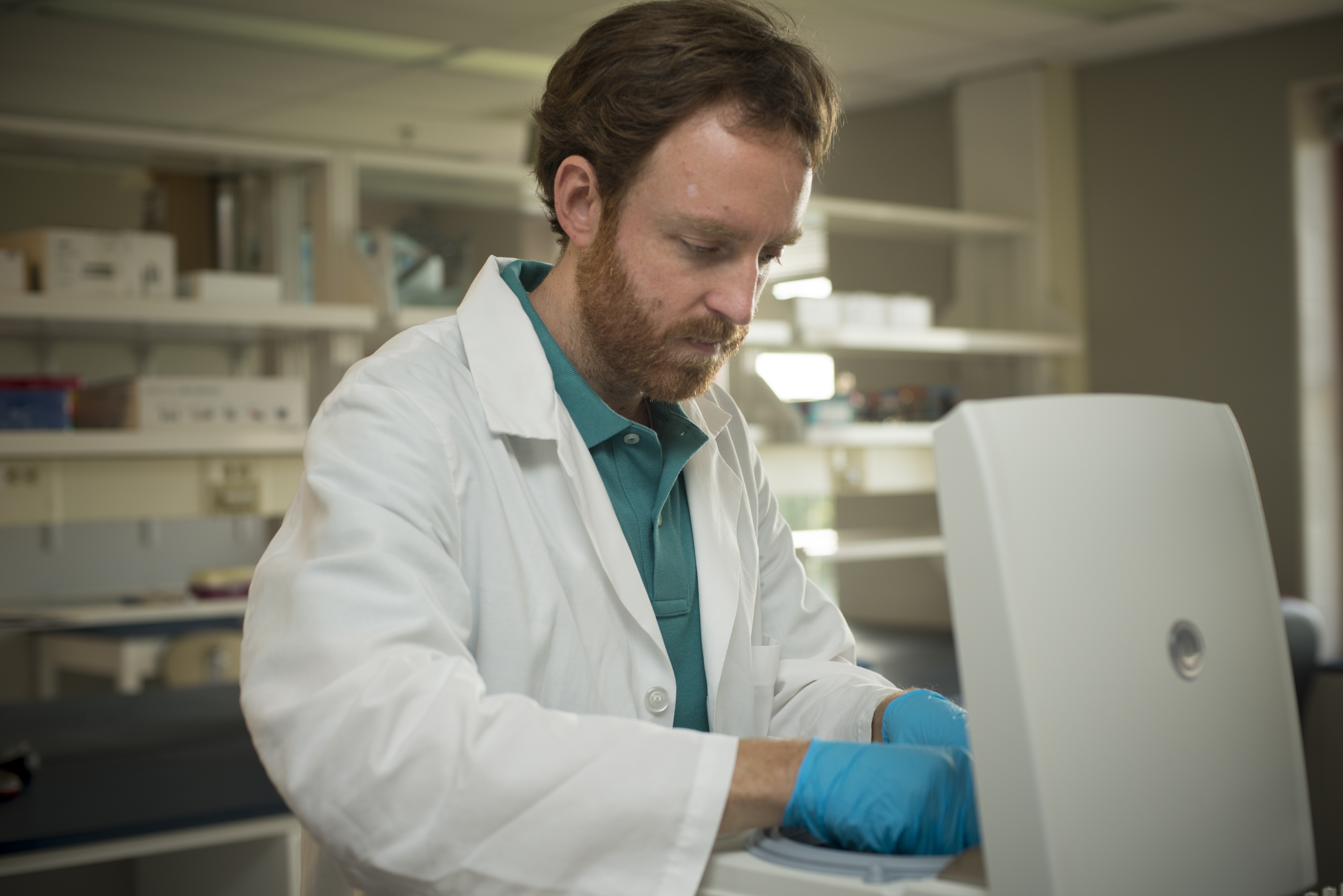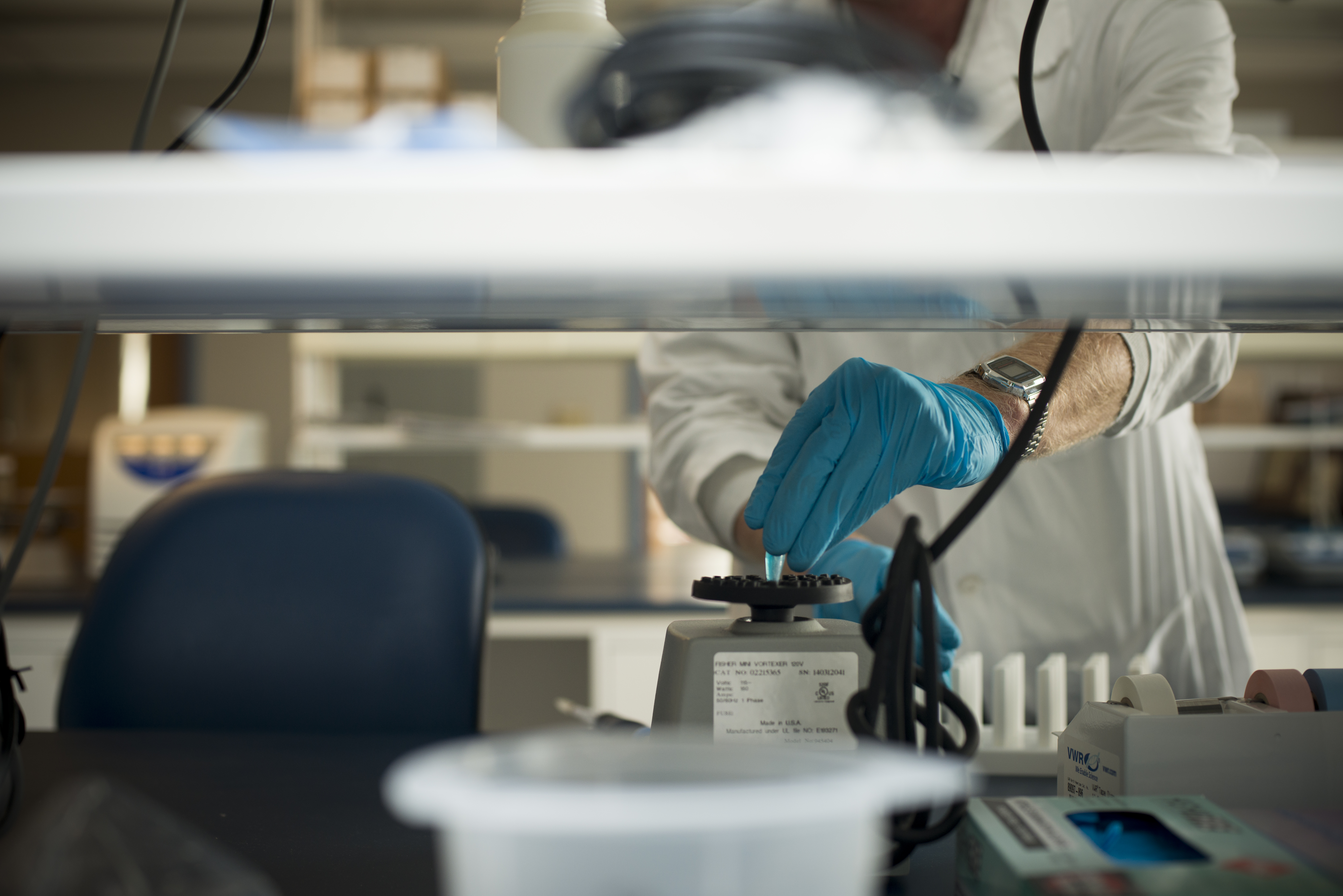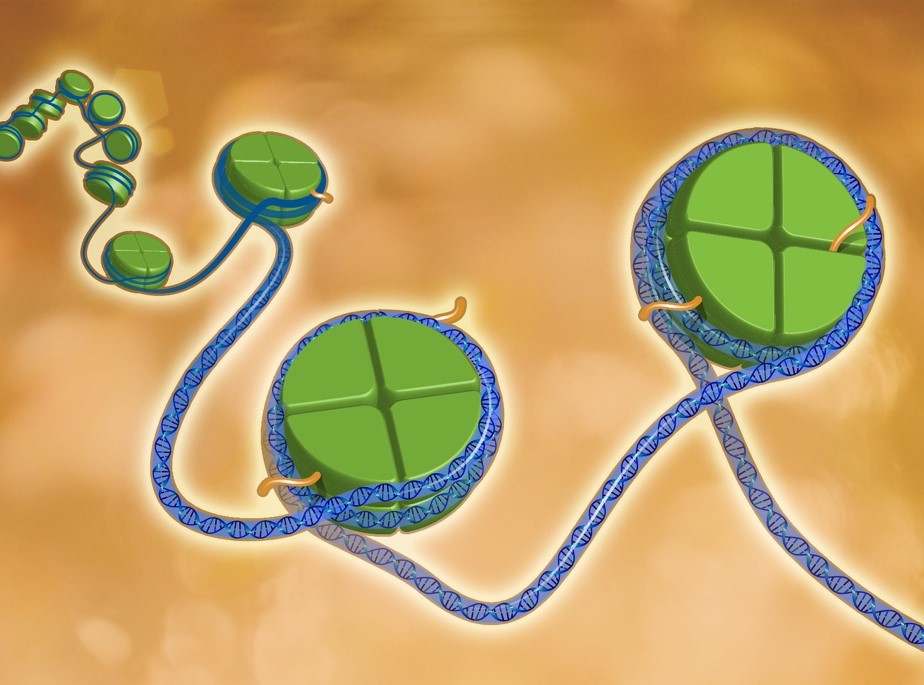Danko lab yields new insights into epigenetics
Discovery may streamline the interpretation of new genomes from understudied animals

A new study from Dr. Charles Danko's group weighs in on a controversial debate in epigenetics — the set of molecular changes occurring "on top" of the genome that regulate how genes are turned on and off, but without changing a cell's DNA sequence.
Scientists studying epigenetics have long argued over the role of histone marks — little chemical tags hitched onto histones, the spool-like proteins that DNA wraps around inside the nucleus. Some researchers argue that histone marks play a role in activating genes and kicking off transcription (the process of copying DNA into RNA to make proteins or for other cellular functions). The new study, however, finds that histone marks are laid down during the transcription process and don’t play a regulatory role.
"These histone marks are essentially cogs in the transcription machinery," said Danko, the Robert N. Noyce Associate Professor in Life Science and Technology at the Baker Institute.

Dr. Zhong Wang, formerly of the Danko lab, and now a professor at Dalian University in China, is a co-lead author on the study, which is published in Nature Genetics. He used publicly available data sets of transcription in mice and humans to develop a computer program that predicts where histone marks occur in the genome. The program, called dHIT, takes data from a single experiment showing where transcription is actively occurring on the chromosomes. Researchers can use a technique called ChRO-seq, which was developed in the Danko lab, or a related technique called PRO-seq, developed at Cornell, to generate the transcription data.
Danko's group used this approach successfully to predict histone locations in mouse, human and horse cells. They showed dHIT works almost as well as biological experiments that directly measure the location of each mark.
Dr. Doug Antczak, the Dorothy Havemeyer McConville Professor of Equine Medicine at Baker, and colleagues from the Functional Annotation of Animal Genomes (FAANG) project contributed data and samples from horses for these experiments.
Alexandra Chivu, a PhD student in the Danko lab and co-lead author, used dHIT in combination with experimental techniques measuring histone marks to find out what happens when transcription is blocked in a cell. She showed that without transcription, histone marks disappear, confirming that their intricate patterns often depend on transcription.
Before the development of dHIT, entire scientific consortia of researchers would work together on a single genome from a model organism to identify the location of histone marks. These new tools greatly simplify that process.
Next, Danko plans to tease out the actual role of histone marks by removing them and measuring the impact on transcription. "If we accept that these marks are parts of the machinery of transcription, then a really interesting question is, what parts of that machinery are they involved in? What is their role if it's not regulation?"

Credit: National Human Genome Research Institute
Written by Patricia Waldron


